GUEST BLOGGER SANDRA NICKEL
In BIG BEAR AND LITTLE FISH, Bear believes she has nothing in common with Fish. Bear is very big; Fish is very small. She likes walks, but Fish probably doesn’t. Bear likes food that is gold; Fish probably likes food that is orange. Yet, through observation, Fish shows Bear that they have more in common than Bear thinks. Our science-minded Fish even demonstrates that being big is a matter of perspective.
Keys to scientific inquiry
At its heart, BIG BEAR AND LITTLE FISH is a story about the importance of observing and changing perspective as we develop friendships. However, the skills of observing and changing perspective are also at the heart of science. Martin Chalfie, a biologist and Nobel Laureate said, “Scientific inquiry starts with observation. The more one can see, the more one can investigate.” And Vera Rubin, an astronomer who proved the existence of dark matter through observation, said, “Science progresses best when observations force us to alter our preconceptions.”
I find that observing and adjusting my perspective are central to understanding the world I live in. I can never get enough of the two, and I hope this is true for your students as well.
Practicing real-time observation
Using the wonderful illustrations created by Il Sung Na on pages 20-21 of BIG BEAR AND LITTLE FISH, ask the students to observe Bear and Fish.
After a few minutes of observation, ask the students to name four differences between the two characters. Examples include Bear is bigger than Fish; Fish wears glasses, Bear does not; Fish lives in water, Bear does not; Fish has scales, Bear has fur; Bear has ears, Fish does not. Now, ask the students to name four similarities shared by Bear and Fish. Examples include they both have eyes; they both have mouths; they both have tails; they both have orangey stomachs; they both can think; they both can talk.
Drawing on real-time and previous observations
With the Scavenger Hunt below students will use real-time and previous observations to determine what they have in common with other students in their class. Real-time observations may include noticing other students’ eye colors or the themes of their t-shirts. Previous observations may include having heard another student speak a second language or having seen another student with a sibling or pet. Ask the students to fill in the two lines in the second row of the chart with their personal preferences. Then, ask them to walk around the classroom, draw on real-time and previous observations, and find out which students in their class match the statements in the chart.
Changing perspectives
Again, using the beautiful illustrations created by Il Sung Na, ask the students to observe the artwork on pages 4-5 of BIG BEAR AND LITTLE FISH. Using the worksheet below, ask the students to circle the character that is biggest in the illustration and rank the four choices by size.
Now, ask the students to observe Il Sung Na’s illustration for pages 26-27 of BIG BEAR AND LITTLE FISH. Using the worksheet below, ask the students to circle the element that is biggest in the illustration and to rank the four choices by size.
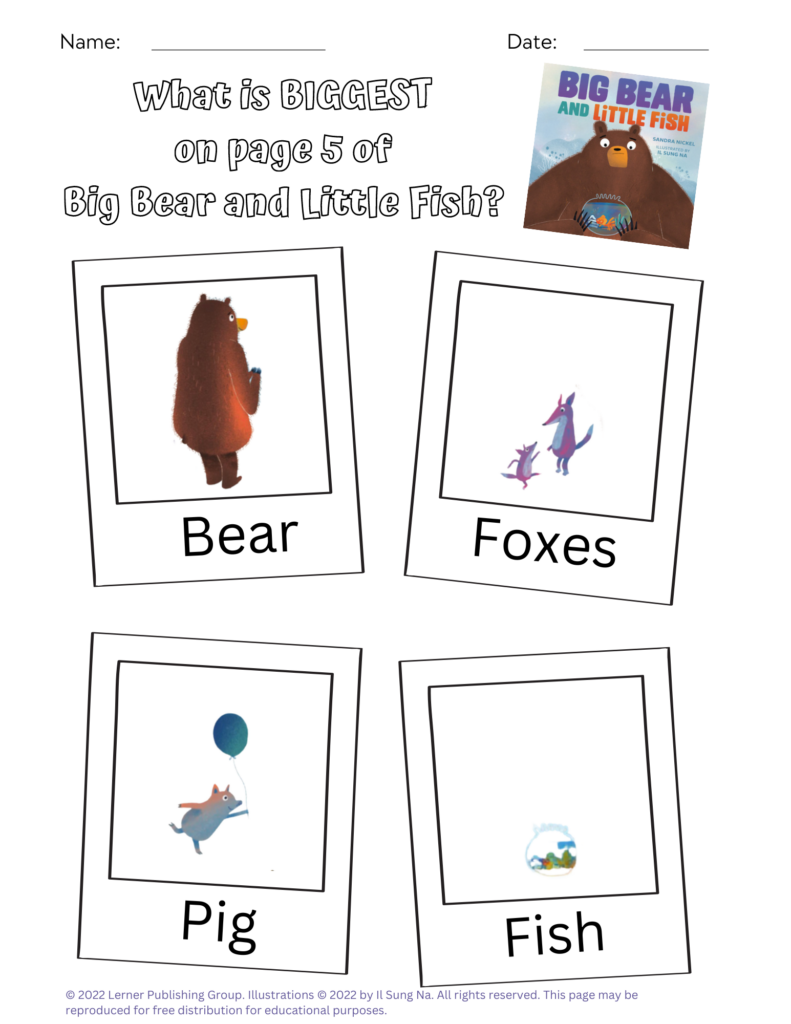
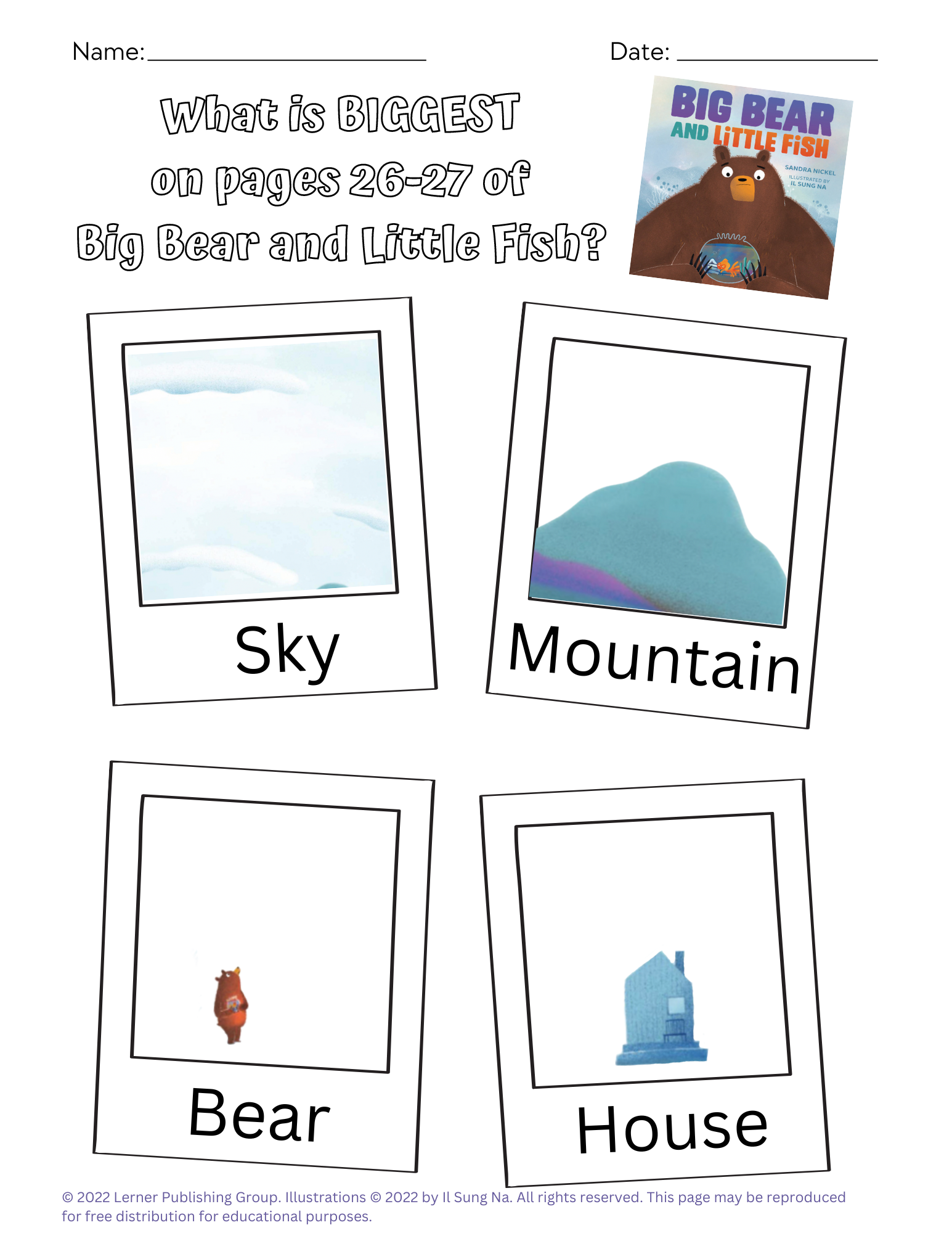
Discuss
Discuss how the perspective has changed. Why is Bear no longer the biggest? It may be helpful to explain to students that size is relative. When compared to Fish, Bear is big. However, when compared to the sky, mountain, and house, Bear is small. It is because of the relative nature of size that Bear says, “I think I might be small,” and Fish responds, “Everybody is sometimes.”
Using the worksheet below, ask the students to draw themselves from different perspectives—as big in relation to one object or animal and as small in relation to a second object or animal.
Featured image from BIG BEAR AND LITTLE FISH by Sandra Nickel, illusrated by Il Sung Na. Carolrhoda Books/Lerner, 2022.
Sandra Nickel is an award-winning author of picture books. She holds an MFA from Vermont College of Fine Arts in Writing for Children and Young Adults and has presented workshops on writing for children and young adults throughout Europe and the United States. She is honored to be the winner of a Christopher Award, the winner of the Society of Children’s Book Writers & Illustrators Crystal Kite Award, a finalist for the Golden Kite Award for Nonfiction for Younger Readers, and a Junior Library Guild Gold Selection honoree. Find her online at:
- Website: https://sandranickel.com/
- Twitter: @senickel https://twitter.com/senickel
- Facebook: @sandranickelauthor https://www.facebook.com/sandranickelauthor
- Instagram: @sandranickelbooks https://www.instagram.com/sandranickelbooks/


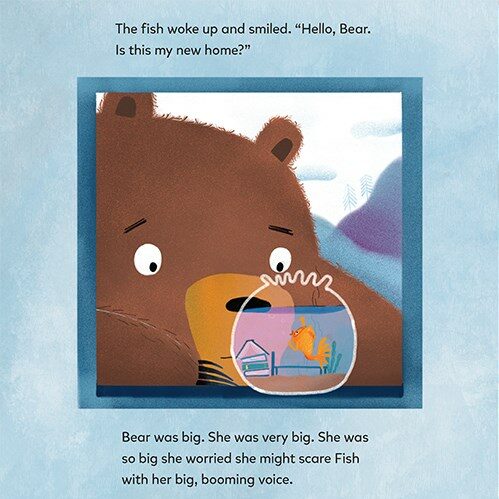

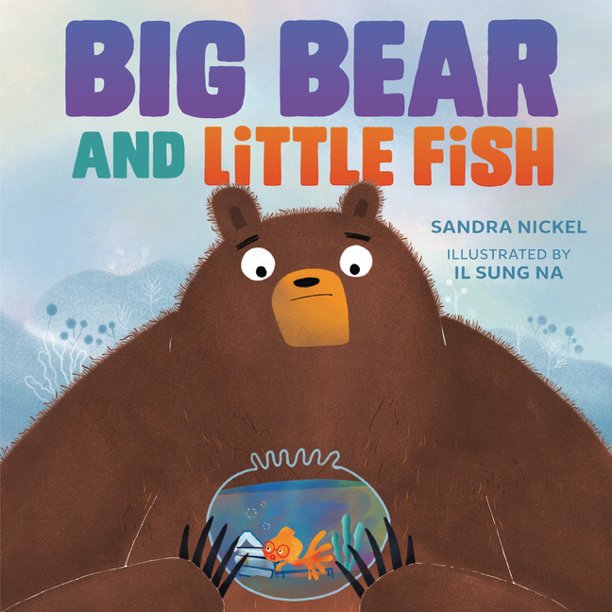
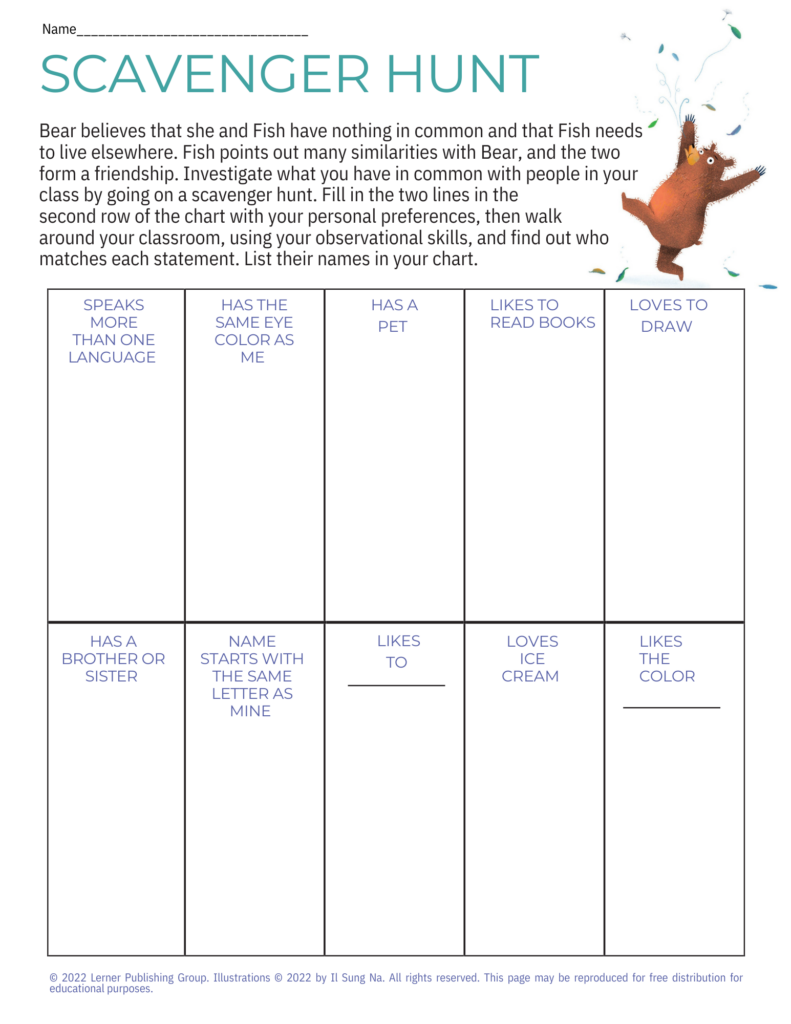
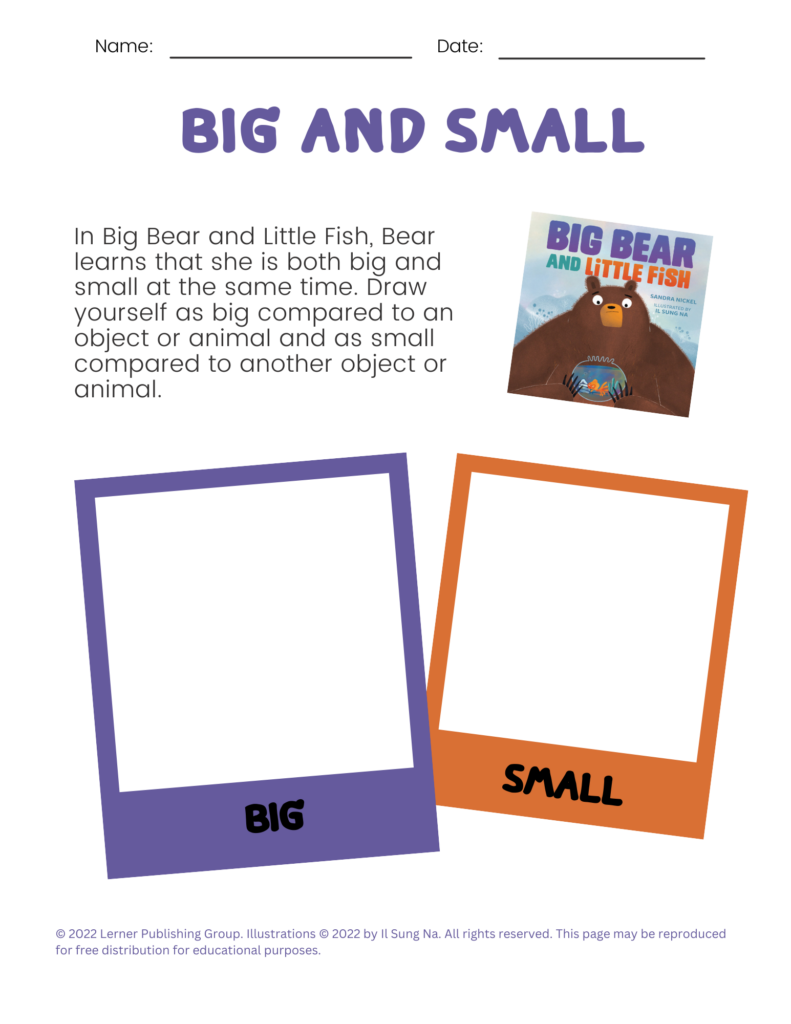

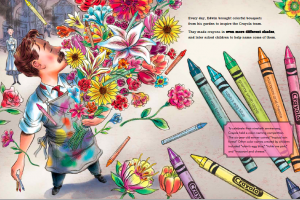
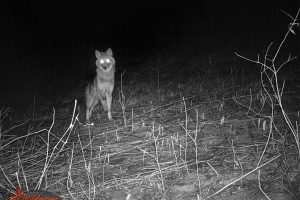
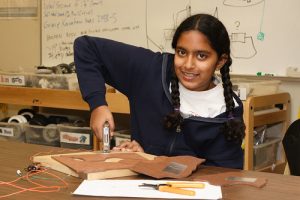


Leave a Reply
Your email is safe with me.